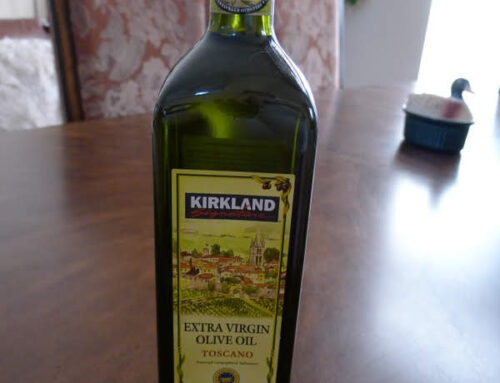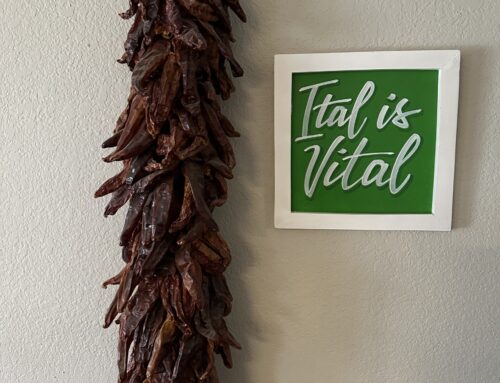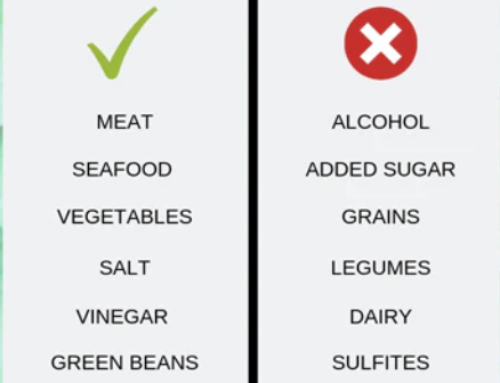When traveling in Fiorenzi, Italy, I decide to embark on a journey to make café, espresso, and cappuccino at home, having seen the Italians do it with success both at home and in restaurants. I wanted to give up my French press and stove-top espresso “machines” in favor of a real machine. I stumbled into a cooking store which features over 100 varieties of real espresso machines and the clerk spoke perfect English after hearing my crude Italian.
He asked, “How may at your house that drink coffee? I replied, “most of the time just me.” He said, “Do you have a few minutes in the morning to read the paper or are you rushed for work?” I said, “I have a few minutes.” He added, “How many would be the most, say for a dinner party?” To which I replied, “Eight.” He said, “Then, this machine” and pointed to a La Pavoni Professional. I quickly added, “But wait, this is a huge store, there are hundreds of options here to look at, how can you so quickly dismiss them all in favor of this one?” He said, “Look, I can sell you a Fiat, or a Ford truck, if you wish, but you look like you can afford this Ferrari and, if so, I can teach you how to drive it and you will never look back at the others after having fallen in love with this Ferrari. La Pavoni is Ferrari.”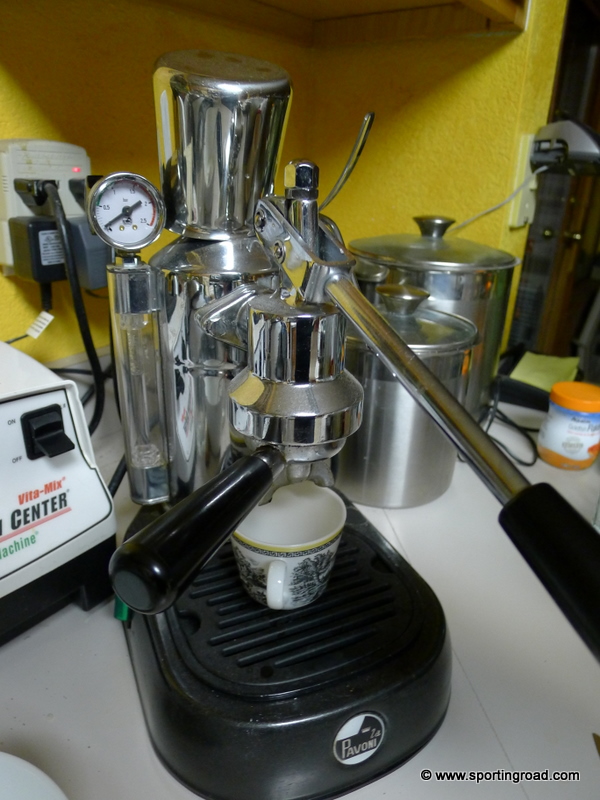
So, he picked a box with a La Pavoni modelo Professional 0,42 gallons espresso machine and made his way to the counter. By the way, I don’t recommend hand-carrying back one of these machines from Italy, especially after 9-11, as it was interesting enough before 9-11 at the airport x-ray machines, not so much in Milan where the attendant looked at his screen and then his supervisor, who simply said, “macchina di espresso” and I was whizzed through. But in Dulles, they called the supervisor to throughly inspect me and my package filled with wires, a gauge and a combustion pot, having me open the box after five minutes of discussion and staring at the screen. But, in the end, maybe it is still worth the half-price discount of buying this Ferrari machine at the source in Italy. 
The clerk had explained that with almost any other home espresso production method, La Pavoni Manual Lever-Piston machines are spartan, expensive, labour intensive, and requires an enormous investment in training, much like really learning to drive a Ferrari to its fullest potential. He explained that most Americans might wonder why anyone would bother with a lever machine at all, as there were far simpler, push-button machines with painless pods, etc., but “if you learn to use this machine, you will simply have the best.”
He pulled my machine out of the box and plugged it in, not being one to forsake time, as others lined up behind me and had to wait for my instruction. I was worried this would create a big mess as the machine was inserted back in at the end of the lesson, in pristine condition with just a wiping of a rag, also a testament to its simple lines.
He explained that a skilled operator of a lever machine can attain a level of control over their shot of espresso that no other home machine user can possibly hope to reproduce. but cautioned that a badly pulled shot may be undrinkable.
Others write that after carefully going through the plethora of material currently available in the manual and other sources, they couldn’t make espresso with a La Pavoni. I never had this problem after my nearly hour-long lesson, and to the onlookers of now six couples waiting to register for their nuptials, etc., all a fact which the clerk seemed to care less about, as he taught me how to make the perfect press carefully unpacking and, later, repacking the machine for this demonstration.
The clerk used Illy beans, but I believe Zabar’s in NYC sells better, having compared them side-by-side and having had tasting parties with my friends following our dinner parties. We like the Zabar’s French-Italian blend slightly better than their Espresso coffee or either of the other two alone, a fact which we discovered before there was a French-Italian blend and had mixed the two beans together on our own.
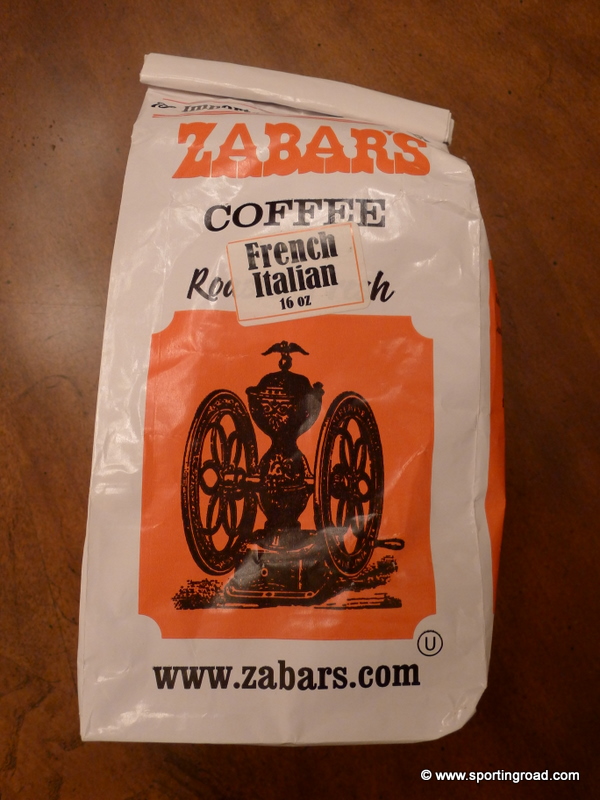 La Pavoni are single boiler machines, which make temperature and pressure important to control. There is the pressure generated by the boiler pressure at the head, exerted by the piston when you push down on the lever.
La Pavoni are single boiler machines, which make temperature and pressure important to control. There is the pressure generated by the boiler pressure at the head, exerted by the piston when you push down on the lever.
If the temperature is set properly at the factory, the pressure gauge of the La Pavoni Profession should peak out between .8-1.0 on the gauge, so as to not risk exploding the boiler, for which there is a safety release valve and port for, as well. The clerk let the machine heat up, then let some steam out of the steaming wand for 5-10 seconds (until the gauge goes down to .5 and the boiler comes back on to then pump it back up to full pressure), which conveniently can be used for warming the serving cups. And then you wait for the pressure to build up again, to the proper reading for making cafe, which is .80-.90 on the gauge, and it shouldn’t go higher than this, if set properly at the factory.
In the base of my La Pavoni Professional, there is an adjustable pressure limiter which you can adjust if there is instability from the factory settings. There are instructions for tweaking this setting, but I have never found this necessary. The temperature swings are greater with less water than when the boiler is almost full, so the clerk advised it would take longer to recover if the boiler gets low, which it will do with 8 servings for dinner parties, but this boiler was just big enough to cover my needs and was fast enough if only making 1-2 cups in the morning for myself. If you have larger needs or smaller needs, there are different size La Pavoni’s available which, in essence, are all the same machines, just different size boilers. And, if you want something even more impressive to light up your kitchen, there are different finishes.
He recommended keeping the machine clean, but to “never wash the coffee cup or drip handle with more than just a rinsing of water, as a well-patinaed filter and drip pan are keys to a good cup of espresso.” He joked that, “With my machine at home it is so well-seasoned, you don’t have to add coffee anymore.” It reminded me of clay tea pots in China, where they said the same thing, but it is really true in the case of the tea pots, in some of the old ones you don’t need tea for an occasional pot, if you found yourself out of tea for a day.
As for water, he recommended using bottled water, but not distilled or tap, so as to avoid a salt and/or chlorine residue from building up in the machine, and to avoid flat or added flavors. And, if the machine is not in use daily, he recommended pouring out the old water and adding fresh bottled water before each use, although the temperature will kill bacteria it will not kill bad tasting stale water.
The grind and tamping go together as the firm packing of the coffee grinds provides resistance for the heated water. He did tamping with real elbow grease, which is not to be understated. This resistance causes the water to flow slowly through the grinds and extracting the cream.
He said that the finer the grind, the tighter the grains may be packed tighter and the harder you tamp, the tighter the grains of coffee are packed together. He was adamant that a cheap blade grinder will not do and you must invest in a pricy bur grinder, and even the conical burr grinder made by La Pavoni was inferior to his liking. The finest grinder available, the freshest beans (not those canned by Illy,the finest setting the grinder allows, and the hardest tampering you can muster, were all advisable.
While he showed that you can warm up the cup and filter by running some heated water through an empty filter into the cup and discarding, this is secondary to releasing steam from the frother, which is the real secret to success. Fill and tamp the filter with coffee, throwing away the “single” filter as it is “too small for a single cup of espresso,” he advised. Then, wipe any stray grains of coffee off the top of the filter cup before putting it in place and tightening as far as possible with the lever.
When the machine has returned to full pressure, raise the handle all the way up. Count 10-30 seconds (which sometimes seems like forever) to allow water to fill the brewing chamber and pre-infusing the coffee before pulling down on the handle. Likely, by this point, there is some rich dark espresso dripping into your cup and covering the bottom, but if not, pump the handle just an inch or so up and down. Once the coffee is dripping (and you don’t want a stream for otherwise you didn’t grind fine enough and/or tamp hard enough) and from there the pressure required to pull the handle down is quite hard. The clerk even tipped the machine inadvertently an inch off the table and then apologized, saying it was “like squealing the tires.” Press with constant pressure and the espresso should be coming out in very quick drops, not a steady stream. The whole process from start to finish should take around 45 seconds per cup, repeating as necessary to serve your party.
You should have the perfect espresso topped with a thick layer of crema formed from extremely fine bubbles that are chocolatey in color. You can now froth the milk for those taking cappucino, rather than espresso. Get a mid-sized stainless steel frothing pot for this and just place the frothing spout just below the milk line, which should be 1/3 of the pot when you start and should fill when you are done. You can then fully immerse the frothing jet and heat the milk to temperature, which I gauge from touching the side of the pot and when it is no longer comfortable, you are ready with the frothed milk. We like 2% milk, but others may debate this point depending on your tastes.
We also think that the HLE IIT Red Stubby Handle Tamper works best with this machine in 49.4mm.


